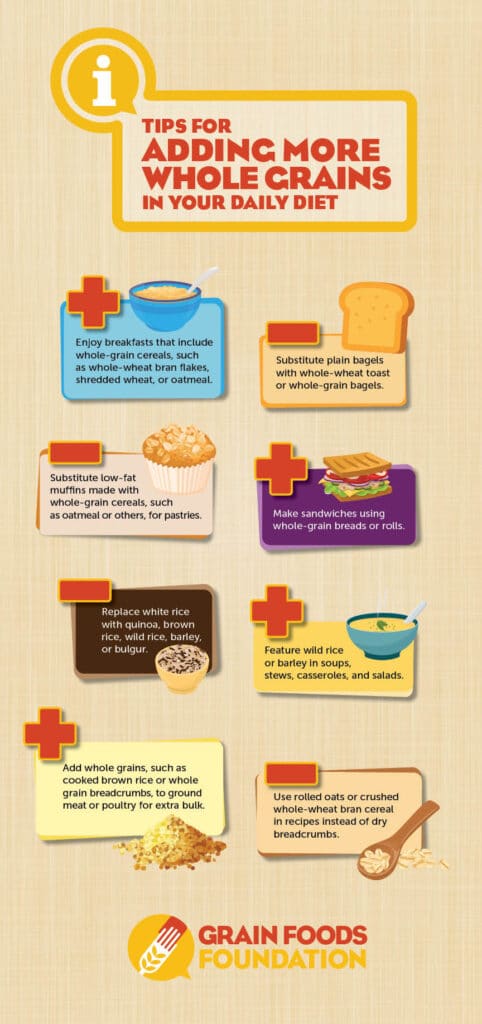What is a Whole Grain?
Like enriched grains, whole grains are not only nutritious but also versatile and delicious. Whole grains contain the entire grain kernel – the bran, germ, and endosperm. The bran (outer layer) contains the largest amount of fiber, the endosperm (middle layer) contains mostly protein and carbohydrates along with small amounts of B vitamins, and the germ (inner part) is a rich source of trace minerals, unsaturated fats, B vitamins, antioxidants and phytonutrients.
Health Benefits
Including whole grains as part of a healthy diet…
- Can help reduce the risk of some chronic diseases including heart disease, diabetes, and some cancers.
- Supports healthy digestion by consuming whole grain foods that contain fiber.
- May help with weight management.
In addition to keeping your body healthy, the bran and germ helps to keep your skin glowing and your hair shiny.


Be a Savvy Consumer When Buying Whole Grains
- Barley, quinoa, oats, brown rice, whole-grain pastas, breads, whole-wheat flour, whole-grain cornmeal and cereals are some whole grain foods.
- When reading food labels, look for the words “whole grain” in the ingredient list or the Whole Grain Stamp.
- Choose products high in fiber with fewer added sugars.
- Words like multi-grain, stone-ground, 100% wheat, cracked wheat, seven-grain and bran don’t necessarily indicate a whole-grain food.
- Color also is not a reliable way to pick a whole grain product. Sometimes molasses or other added ingredients give a food that nice brown color.

Kid-Tested Approved!
Yes, there are many snack options for those picky eaters! Half of a whole-grain pita pocket stuffed with ricotta cheese and Granny Smith apple slices with a dash of cinnamon is a great small bite. Or, for kids to eat on the run, combine ½ cup ready-to-eat whole-grain cereal, dried fruit and nuts for an on-the-go snack.
To gradually introduce whole grains to your family, you can combine whole-grain foods and enriched grain foods to achieve the daily recommended six servings of grains.
